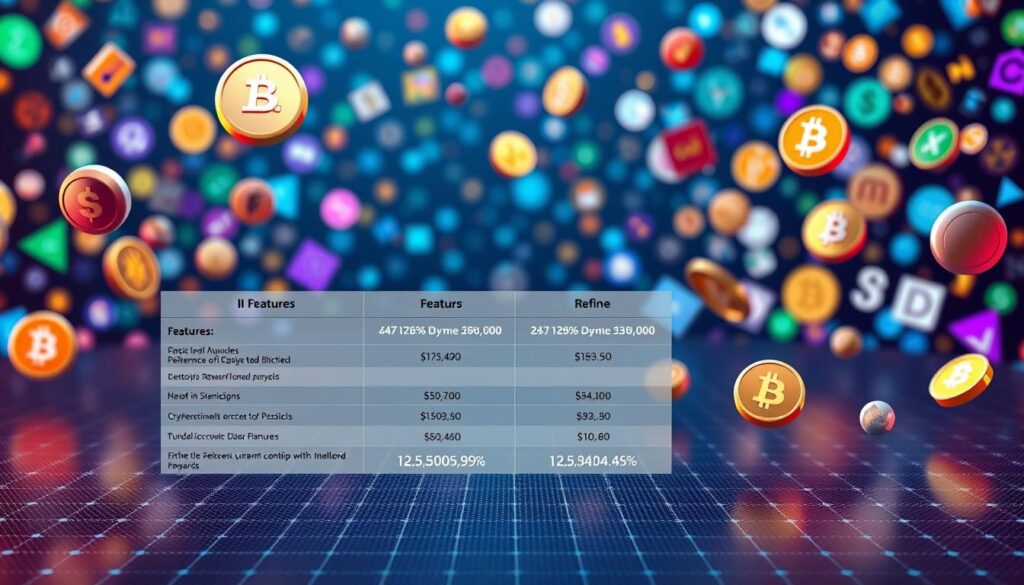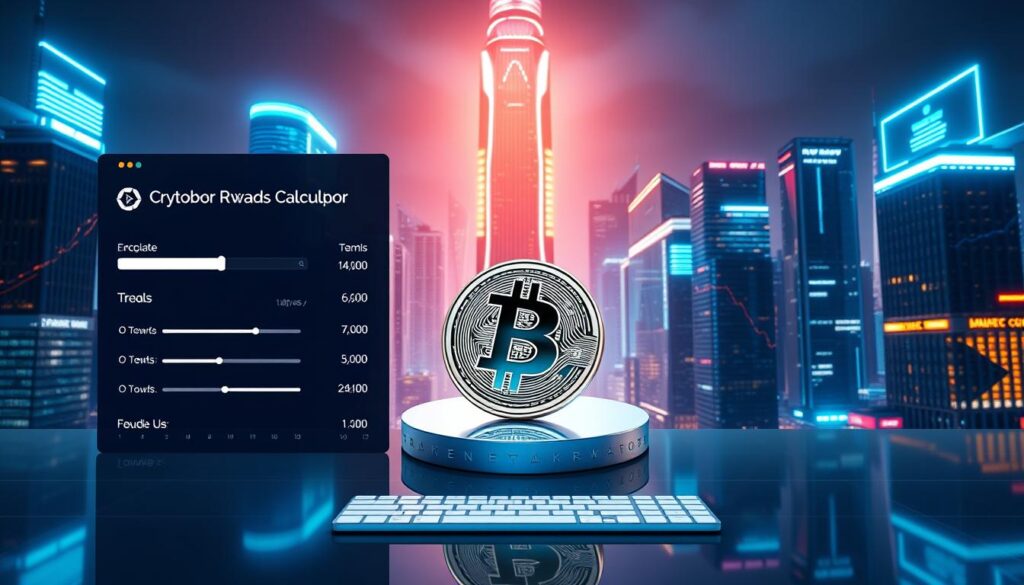Now Reading: Tax Considerations for Token Burn Strategies
- 01
Tax Considerations for Token Burn Strategies
Tax Considerations for Token Burn Strategies

Token burns in cryptocurrency reduce the total supply of a digital asset. This can affect investor portfolios and project economics. As these events become more common, it’s key to understand the tax implications of token burns.
Tax authorities like the IRS watch these actions closely. It’s crucial for holders and developers to handle token burn tax implications well. This ensures they stay compliant and plan their finances wisely.
Key Takeaways
- Token burns may trigger taxable events under IRS cryptocurrency tax rules.
- Accurate cost basis tracking is required after burns to avoid reporting errors.
- Strategic timing of burns can reduce capital gains liabilities for investors.
- IRS classifications determine whether burns qualify as taxable disposals or non-reportable events.
- Failure to report token burn transactions risks penalties under U.S. tax law.
Understanding the Tax Implications of Token Burns
Crypto transactions can lead to tax events, and token burns are no different. The IRS keeps an eye on all crypto activities, including token destruction. This part explains how tax rules apply to these actions and how they differ from other crypto activities.
What Constitutes a Taxable Event in Cryptocurrency
Taxable events include selling, trading, or exchanging crypto for fiat or other assets. For example:
- Trading Bitcoin for Ethereum
- Using crypto to purchase goods/services
- Receiving crypto as payment
Token burn tax consequences depend on whether the burn qualifies as a disposal or transfer under IRS guidelines.
How the IRS Views Token Burns
The IRS sees crypto as property, requiring taxpayers to report gains/losses when tokens are sold or disposed of. Token burns may qualify as taxable disposals if:
- Users relinquish control over tokens permanently
- Value is transferred to other parties
- Project developers destroy tokens to reduce circulating supply
No official IRS rulings exist yet, leaving room for interpretation during audits.
Difference Between Token Burns and Other Crypto Transactions
Token burns differ from staking or swaps. Staking generates rewards taxed as income, while swaps involve exchanging tokens which creates taxable events. Token burns may be treated uniquely if tokens are:
- Removed from circulation permanently
- Not redistributed to holders
- Used to reduce market supply rather than generate profit
Consulting a tax professional is critical to avoid misclassifying these complex transactions.
The Fundamentals of Cryptocurrency Token Burns
Token burns remove tokens from circulation forever, changing a cryptocurrency’s supply. Projects do this to control how many tokens are out there. They want to make tokens more valuable or encourage people to use the network. Token destruction tax considerations start here, as each method affects taxes differently.
They might burn tokens to make them scarcer, fund the ecosystem, or thank holders. For example, Binance burns BNB to keep its supply in check. Ethereum destroys ETH through EIP-1559, using transaction fees. These actions lead to tax on cryptocurrency token burns when they create taxable events.
Burns happen through smart contracts or exchanges, with blockchain records showing the destroyed tokens. These records are unchangeable, making everything clear. The way burns are done—automatic or manual—also matters to tax authorities like the IRS.
Different platforms handle burns in unique ways. Bitcoin doesn’t have burn features, but Solana rewards validators with burns. Investors need to know how their token’s protocol handles destruction. This knowledge helps them follow IRS rules and avoid missing token destruction tax considerations.
How the IRS Classifies Token Burns for Tax Purposes
The IRS looks closely at token burns under current tax laws. This shapes how people and businesses report token burning taxation. Knowing these rules helps avoid fines and follow new digital asset rules.
Token Burns as Disposals vs. Non-Taxable Events
There’s a big difference between taxable and non-taxable situations. If burns trigger disposals, like sending tokens to a lost wallet, you might face capital gains taxes. But, if a protocol reduces tokens without anyone’s action, it’s not taxable.
- Taxable disposal: Selling tokens to a platform that destroys them
- Non-taxable event: Protocol algorithm reducing circulating supply without user action
Recent IRS Guidance and Rulings
IRS Notice 2023-20 made it clear that voluntary token destruction is usually taxable. This is under tax rules for token burns. Also, there are fines for exchanges that don’t handle burns right. Important points include:
- Reporting disposals at fair market value on Form 8949
- Penalties for unreported disposals up to 75% of owed taxes
Potential Changes to Token Burn Tax Classification
New rules might make some burns tax-free if they’re seen as operational costs. Keep an eye out for 2024 updates to IRS crypto guidance. It will cover:
- Smart contract automated burns
- Enterprise-led deflationary token models
Stay updated to keep your strategies in line with changing token burning taxation rules.
Different Types of Token Burning Mechanisms and Their Tax Treatment
Token burn tax treatment depends on how blockchain projects destroy tokens. Knowing these methods helps follow token burning taxation rules. Each method has its own rules for reporting taxes.

Proof-of-Burn Consensus Mechanism
Some networks use proof-of-burn to validate transactions. Users must destroy tokens to mine new ones. The IRS might see this as a taxable event.
For example, burning tokens to mine new coins could lead to capital gains. This happens if the original tokens increased in value.
- Disposal of tokens for mining access may qualify as a taxable event
- Revenue from mined tokens must be reported as income in the year earned
Buyback and Burn Programs
Companies buy tokens on secondary markets and then burn them. This reduces the supply. Holders who didn’t participate might still face token burn tax treatment if their tokens’ value goes up.
Tax rules depend on whether holders gain from the increased token scarcity. This is without them selling their tokens.
- Price increases post-burn can create unrealized gains for non-participating holders
- No direct taxable event occurs unless tokens are sold after value appreciation
Deflationary Token Models
Protocols that burn tokens with every transaction make reporting tricky. The IRS looks at whether holders dispose of tokens with each burn. Holders who don’t sell might need to update their cost basis for remaining tokens.
- Micro-burns per transaction require tracking cost basis adjustments
- No direct tax liability for holders unless tokens are sold
Token Burn Tax Consequences Based on Holder Type
Token burn tax consequences change a lot based on who holds the tokens. For individual investors Businesses, on the other hand, might see the tax as inventory sales, affecting their cost basis.
- Miners: Income from mined tokens subject to burns might incur self-employment taxes under IRS guidelines.
- Professional Traders: Token burns affecting trading income could require Form 1040 Schedule D reporting, with potential wash sale restrictions.
- Funds/Entities: Investment funds must issue K-1 forms to partners, detailing their proportionate share of tax on cryptocurrency token burns.
Businesses can deduct burn-related losses as business expenses. But, individual holders report gains on their personal tax returns. Cryptocurrency miners converting tokens into cash during burns risk payroll tax obligations. For detailed guidance, review IRS-compliant reporting strategies. Tax outcomes depend on how the IRS categorizes each holder’s activity, emphasizing the need for tailored planning.
Documentation Requirements for Reporting Token Burns to the IRS
Understanding tax rules for token burns is crucial to avoid penalties. The IRS closely watches all crypto transactions, including token burns. Keeping accurate records helps with compliance and makes audits easier.
Record-Keeping Best Practices
Here’s what to track for every token burn:
- Exact transaction hash and blockchain address
- Date and time of the burn event
- Fair market value (FMV) in USD at the time of the burn
- Purpose of the burn (e.g., deflationary protocol, project development)
Required Forms for Reporting
Use these forms to report token burn transactions:
- Schedule D: For capital gains/losses from disposed tokens
- Form 8949: Detailed breakdown of crypto transactions
- Form 1040: Include total gains/losses in Part III
Supporting Documentation to Maintain
Keep these records for at least six years:
- Blockchain explorer screenshots verifying burned tokens
- Exchange or wallet transaction confirmations
- Project whitepapers outlining burn mechanisms
Good documentation helps avoid risks related to token burn tax implications. It’s wise to get help from a tax expert to keep up with IRS changes.
Common Misconceptions About Token Burn Tax Rules
Many crypto holders think token burn tax treatment is simple, but they often get it wrong. They believe tax implications of token burns are always free from taxes. But, the IRS looks closely at each transaction’s purpose and setup, not just the technical side.
Some think burning tokens always means a tax loss. But, the IRS needs proof that the tokens are gone for good. Tokens sent to unknown addresses might still be questioned if they could be recovered. Also, the idea that a “burn address” means no taxes is wrong because the IRS looks at the economic effect, not just how it’s done.
- Self-executed burns are different from those required by the protocol; the IRS decides if tokens are “disposed” under tax law.
- Even without clear IRS rules, existing crypto tax rules still apply to unclear situations.
- Advice from online forums or communities often gets tax rules wrong, leading to penalties if not checked by a pro.
Intent is key: Even if tokens are destroyed, gains from past trades might still cause capital gains. Taxpayers must keep detailed records of each burn, including dates, values, and protocol details. Getting help from a pro ensures you follow the latest token burn tax treatment rules and avoid big mistakes.
Strategic Timing of Token Burns to Optimize Tax Outcomes
Timing token burns carefully can reduce token destruction tax considerations and shape overall financial results. Taxpayers must align burn events with IRS rules to minimize token burn tax consequences while maximizing benefits.

- Burn tokens showing losses to offset gains from other assets
- Avoid wash sale rules by avoiding repurchasing similar tokens within 30 days
Long-Term vs. Short-Term Holding Periods
- Hold tokens >365 days to qualify for long-term capital gains rates (0%, 15%, or 20%)
- Short-term burns (
Year-End Tax Planning Tips
Strategize before December 31 to:
- Accelerate losses by burning underperforming tokens
- Defer gains until the next tax year
- Coordinate with income levels to stay in lower tax brackets
Proactive timing ensures compliance while leveraging IRS rules to reduce liabilities. Consult tax advisors to align burn strategies with personal financial goals.
Token Destruction Tax Considerations for Project Developers
Project developers must carefully plan token burn strategies to avoid legal issues. They need to consider how token burns affect corporate taxes. This depends on whether treasury funds are used to buy and burn tokens.
Deciding if these actions are operational expenses or capital expenditures changes how taxes are calculated. This choice can greatly impact a company’s taxable income.
Developers giving tokens to team members under burn conditions face big challenges. They must track the fair market value of these tokens at the time they are given. This is important for accurate tax reporting.
Unsold tokens from initial sales must also be documented correctly. Not reporting these as token burning taxation events could attract IRS attention. Teams working internationally must also deal with different tax rules in each country.
- Treasury burns: Determine if token purchases qualify as deductible business expenses
- Team allocations: Track burn clauses affecting equity-based compensation reporting
- Unsold tokens: Report initial offering leftovers as taxable assets before destruction
- Global compliance: Address transfer pricing rules when executing cross-border burns
Creating burn mechanics that don’t break securities laws is very complex. Developers should talk to tax experts to make sure their token models follow IRS rules. Keeping detailed records of burn events and their values is also key for audits and staying compliant.
How Token Burns Affect Cost Basis Calculations
Token burns change the cost basis of your crypto, affecting taxes. The right accounting method is key to lower taxes under tax rules for token burns. This part explains important accounting strategies and examples.
FIFO, LIFO, and Specific Identification Methods
Accounting methods decide taxable gains from token burns. Here’s how each method works:
- FIFO (First-In-First-Out): The oldest tokens are sold first. This can increase taxable gains for long-held assets.
- LIFO (Last-In-First-Out): The newest tokens are sold first. This is good if newer tokens cost less, lowering taxable income.
- Specific Identification: You choose which tokens to burn. It needs careful tracking but can help with taxes.
Cost Basis Adjustment After Partial Burns
Partial burns mean you need to recalculate the basis. For example, if 50% of 100 tokens (bought at $10 each) are burned, the basis changes. The new basis is $1,000 total ÷ 50 remaining tokens = $20 per token. IRS rules require accurate tracking to avoid penalties.
Impact on Remaining Token Valuation
Burns can make tokens scarcer, increasing their value. If the remaining tokens’ value goes up after a burn, you’ll have to pay taxes under tax on cryptocurrency token burns rules. You must report the increased value on IRS Form 8949.
International Tax Implications for US Taxpayers Participating in Foreign Token Burns
US taxpayers taking part in token burns by foreign crypto projects face complex rules. They must report foreign bank accounts with over $10,000 through FBAR. FATCA also requires them to disclose ties to crypto platforms abroad, even without immediate tax issues.
Token burns can lead to double reporting for US taxpayers. If a foreign country taxes token burns as sales, US taxpayers might get foreign tax credits. Tax treaties can also help decide if token burns are taxable in both countries.
- FBAR Compliance: Report foreign crypto accounts even if the exchange operates burn mechanisms.
- Treaty Benefits: Review bilateral agreements to determine how token burn proceeds are classified.
- Residency Rules: Americans abroad must ensure token burn proceeds don’t disrupt eligibility for the Foreign Earned Income Exclusion.
Double taxation is a risk when foreign countries tax token burns as capital gains. Taxpayers need to track transactions in both countries to claim credits or exemptions. Working with tax advisors who know international crypto rules is key to following IRS and foreign tax laws.
Case Studies: Tax Outcomes from Major Token Burn Events
Real-world examples show how token burn tax treatment affects people. Big projects like Binance, Ethereum, and Terra give us key insights. They help us understand what we need to report to the tax authorities.

Binance BNB Quarterly Burns
Binance burns BNB every quarter using its profits. The exchange must report the gains from selling BNB as income. But, holders don’t face tax on cryptocurrency token burns right away unless they sell after the burn.
For example, if a holder owns BNB, the reduced supply lowers their cost basis. This affects their capital gains in the future.
- Exchange: Reports BNB purchase costs as business expenses.
- Holders: Track basis changes via reduced circulating supply.
Ethereum’s EIP-1559 Implementation
Ethereum’s protocol burns ETH transaction fees automatically. Miners and validators might have to pay taxes on fees they got before burning. Holders don’t get taxed on burned fees unless they claim them as income.
For example, a validator who gets and burns ETH must report the fees they got as taxable income.
- Validators: Report fees as income before burning.
- Holders: No direct tax impact from protocol-level burns.
Terra LUNA Burn Mechanism
Terra’s collapse shows how sudden value loss affects token burn tax treatment. Investors might deduct losses from burned LUNA tokens as capital losses. A holder who owned LUNA before the crash can report the loss on Form 8949.
- Traders: Report LUNA sale losses at fair market value at burn date.
- Long-term holders: Use Form 8949 to claim losses post-collapse.
Working with Tax Professionals on Cryptocurrency Token Burning Taxation
Handling token burning taxation needs special skills. Tax experts who know about cryptocurrency and capital gains can guide you. Look for advisors who are certified in crypto taxation, like Enrolled Agents or CPAs with blockchain experience.
- Do you track IRS updates on crypto asset disposals?
- Have you handled cases involving deflationary token models?
- Can you explain how burn events affect cost basis calculations?
Before meeting with a tax advisor, get your documents ready:
- Transaction records showing burn dates and amounts
- Blockchain wallet statements
- Project whitepapers describing burn mechanisms
Prices for tax advice vary. You might pay $200 an hour or a flat fee for full service. Compare prices with certified tax software like ZenLedger or CoinTracker. If your burns are complex, you’ll need an expert.
- Multi-jurisdictional holdings
- Unresolved IRS audit issues
- Unusual burn structures
Small holders with simple burns might file on their own. But, complex cases need a pro to avoid mistakes. Keep up with IRS changes to stay compliant.
Legal Precedents and Court Cases Related to Token Burn Tax Treatment
Legal decisions on token burn tax treatment often compare to traditional asset abandonment cases. Courts have said that giving up property rights leads to tax issues. This was seen in Echols v. Commissioner (1984), where mineral interests were taxed after being abandoned. These cases help shape the debate on whether token burns should be taxed.
Landmark Rulings Shaping Modern Interpretations
Important historical rulings include:
- Lucas v. American Code Co. (1914): Showed that losing assets permanently is recognized as a loss.
- Bob Jones University v. United States (1961): Made it clear when giving property away can lead to tax issues.
These cases guide us on when destroying assets leads to taxable events under tax rules for token burns.
Ongoing Legal Challenges to IRS Frameworks
Recently, there have been disputes over IRS Notice 2014-21’s wide view of virtual currency transactions. A 2023 Tax Notes analysis points out lawsuits questioning the current tax rules for token burns. They say token burns are different from regular asset sales because of their unique destruction methods.
Potential Tax Reform and Future Regulatory Changes Affecting Token Burns
Crypto investors need to keep an eye on changing policies. These changes affect token burn tax implications and token destruction tax considerations. The Virtual Currency Tax Fairness Act could make reporting burns easier for taxpayers.
New rules on capital gains rates or digital asset reporting might change tax liabilities. This could impact how burn events are taxed.
- Congressional bills may exempt certain burns from taxable event classification
- IRS guidance could clarify cost basis adjustments post-destruction
- OECD frameworks might influence US treatment of cross-border burns
Changes in tax policy affect how destroyed tokens are valued. Proposed reforms like digital asset disclosures on Form 1040 could standardize reporting. Tax experts suggest keeping up with global changes.
The EU’s MiCA regulations and FATF guidelines might affect US taxpayers. Investors should be ready for changes in token destruction tax considerations. This includes how they interact with cost basis rules and holding period calculations.
Advocacy groups want clearer definitions of “disposal” events. This could reduce uncertainty around burn-related gains. Keeping up with these changes helps manage portfolios in emerging regulatory landscapes.
Proactive planning is key as policymakers debate these complex issues.
Implementing a Tax-Efficient Token Burn Strategy: Key Takeaways
Managing token burn tax implications starts with planning ahead. First, check the cost basis and holding periods of your tokens. This helps reduce tax consequences. Use tools like CoinTracker or Koinly to track your transactions accurately.
Timing is key. Try to align burns with tax-loss harvesting or year-end strategies. This can help maximize gains or reduce losses.
It’s important to classify burns correctly. If you sell tokens before burning them, it’s a sale. If you burn them directly, check IRS rules to see if it’s a disposal. Update your records after each burn to adjust the cost basis of your remaining tokens.
Keep receipts from exchanges and smart contracts for audits. This proof is crucial.
Stay up to date with IRS changes. Projects like Binance’s BNB burns or Ethereum’s EIP-1559 show how burns affect taxes. Always get advice from tax experts for complex cases.
Review your strategies as rules change. Taking proactive steps now helps you stay compliant and adaptable. Make sure to document everything clearly and report on time to handle token burn tax issues well.
FAQ
What are the tax implications of token burns?
Token burns can lead to tax issues. If the IRS sees a token burn as taxable, you might have to report gains or losses. Knowing which burns are taxable and how to handle taxes is key.
How does the IRS classify token burns for tax purposes?
The IRS looks at token burns in two ways: taxable or not. Recent rules have helped clear up some confusion. But, it’s still important to stay updated and ready for audits.
Are all token burns tax-free?
No, not all token burns are tax-free. Whether a burn is taxable depends on the user’s goals and how it’s done. It’s wise to talk to a tax expert to understand your duties.
What are token burn tax treatment differences for individual investors versus businesses?
Individuals face capital gains when tokens are burned. Businesses might see tokens as inventory, with different tax rules. Each group has its own tax strategies and needs.
How do I report a token burn on my tax return?
To report a token burn, you’ll need to use IRS forms like Schedule D and Form 8949. You’ll record capital gains and losses. The exact steps depend on your situation, so getting advice is crucial.
What are the potential outcomes of the IRS’s stance on token burn taxation?
IRS rules on token burns could change. Legal fights and new laws might affect taxes. It’s important to keep up with updates to plan your taxes.
Can I use token burns for tax-loss harvesting?
Yes, you can use token burns for tax-loss harvesting. This means burning tokens to offset gains from other investments. But, watch out for wash sale rules.
What documentation is required for reporting token burns?
You’ll need details like transaction hashes, dates, and values for reporting token burns. Keeping this info helps with compliance and protects you from audits.
How do different types of token burning mechanisms affect tax treatment?
Token burning methods like proof-of-burn and buyback programs have different tax effects. Knowing how each works helps figure out your tax duties.
What common misconceptions exist about token burn tax treatment?
Many people think all token burns are tax-free or automatically lead to losses. But, the tax outcome depends on the burn’s details, like intent and structure.

















